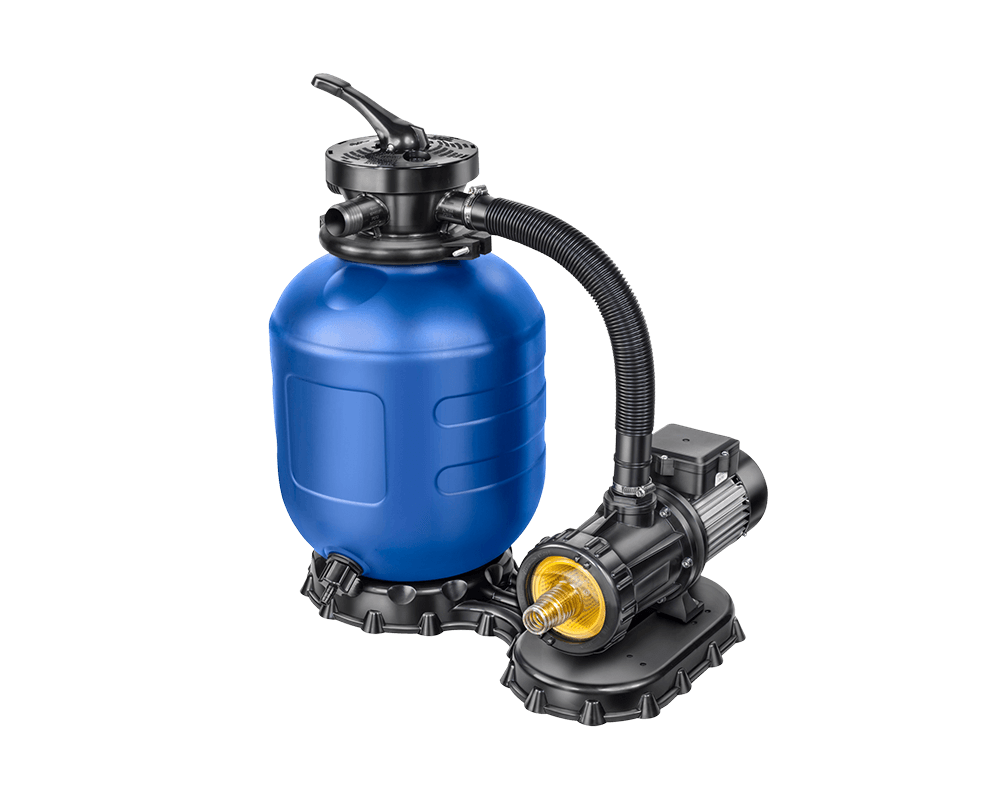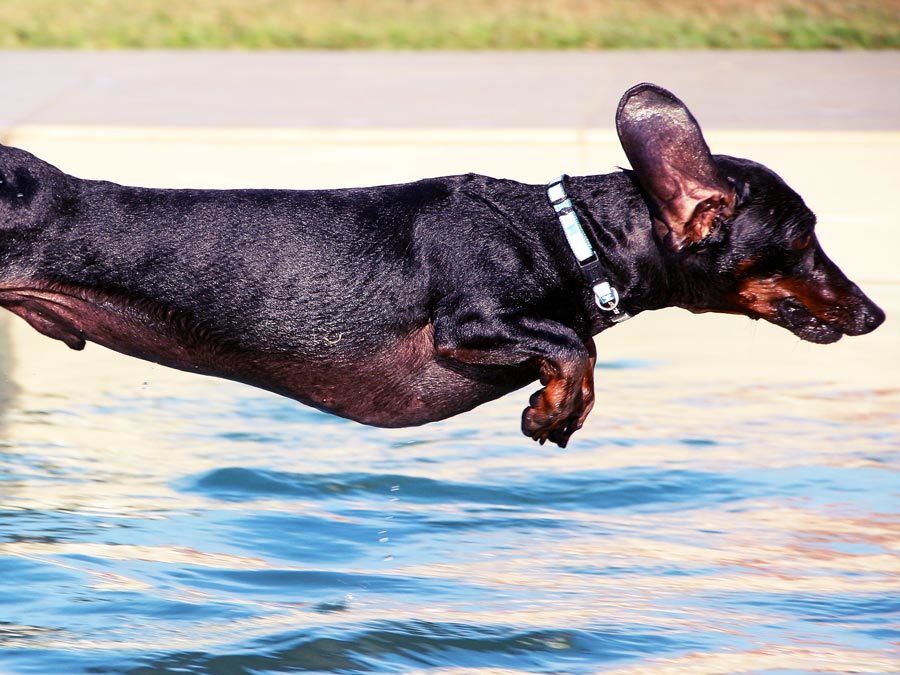Jump in and feel good – that’s how it should be. Your pool belongs to you and your loved ones. Dirt, bacteria and algae have no business in the pool water. If you apply the water treatment correctly and follow some simple rules, you will be able to enjoy your pool undisturbed. Every day.
The pool pump
The pool pump is the central factor in the water circulation and filtration process and it must be able to do its job day after day. Ideally the pool water is circulated twice a day. Example calculation: if the pool has a volume of 30 m³ and the pump has a flow rate of 30 m³/h, the pump should be in operation for at least 2 hours a day. If the pool is used intensively (high season, pool parties), the operation time should be increased. Important: the hotter the weather, the more important sufficient filtration is. Allow the unit to run longer rather than shorter. The suction basket must be cleaned at least once a week in order for the pump to remain completely efficient.
The filter unit
The filter unit draws pollutants and organic substances out of the pool water when it passes through the filter media. The fuller the filter media is with dirt and substances, the higher the filter resistance i.e. the cleaning effect is reduced. Regularly backwashing frees the filter surface from pollutants and avoids microscopic substances sticking in the bottom of the filter bed and reducing the sustained filter performance. It is best to rinse for one minute after backwashing.

FILTER UNIT AQ
The right sand filter for optimal cleaning.
Daily pool cleaning
It doesn’t always have to be fish, fishing with a telescopic net can also be fun. Stray insects, grass, petals and leaves – everything that doesn’t belong in the pool should be fished out daily. The skimmer basket should also be emptied and dirty edges cleaned every day and the pool floor should be cleaned regularly. Thus the pool will always look inviting and the use of disinfecting agents will not cause an unnecessary strain.
The correct pH value
The pH value of the pool water is of great importance: it influences the disinfection capacity of the chlorine and the tolerance of the water for the skin. It’s best for the pH value to remain in a neutral range i.e. between 7.0 and 7.4. If the value is too low, there is a risk of metal parts corroding (pool ladders, inlet nozzles, pumps etc.). If the pH value is too high, the acid layer of the skin will be damaged, the effectiveness of the disinfection will be reduced and it will start to smell of chlorine. Important: if the pool has been newly filled, the pH value should be checked at least every two days. Otherwise one check per week will suffice.
Disinfection with chlorine
Adding chlorine with a high depot effect, for example in the form of chlorine tablets or granules, has proved best when fighting bacteria, algae and other organic substances. Important: chlorine belongs in the dosage float and not in the skimmer basket (this would put an unnecessary strain on the filter and suction line). Practical meters are available to measure the chlorine content. A good chlorine value is between 0.3 and 0.5 ppm. Stabilisers slow the decomposition process and therefore prolong the disinfecting effect.
Preventative algae protection
Algae not only affect the optical water quality but they also produce organic substances which offer bacteria and fungi an ideal breeding ground. Apart from that they block the filter and form unsightly streaks on the edge of the pool. In order to prevent algae effectively, you should add special protective substances to the pool water (approx. every 14 days).
Continuous flocculation
If you would like crystal clear pool water, you should be sure to constantly add flocculating agent. The reason being that every pool user brings body fats, cosmetics, bacteria etc. into the pool. Such contaminations cannot be seen, however the clouding of the water that results can be seen. These dirt particles are so extremely fine that they are only partly filtered out by even the best filters. Flocculating agents absorb such substances during flocculation so that they are left with the flakes in the filter bed.
